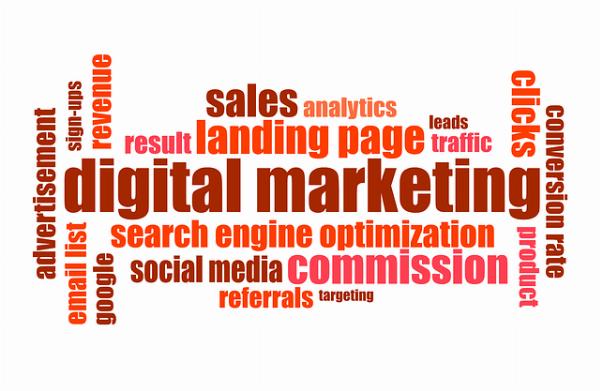Digital Display Advertising: Innovations to Watch in 2024

Strong 8k brings an ultra-HD IPTV experience to your living room and your pocket.
Digital display advertising has become a cornerstone of online marketing strategies, providing brands with the ability to reach large audiences through visually engaging content. As the digital landscape continues to evolve, staying updated with the latest innovations is crucial for marketers aiming to maintain a competitive edge. In this comprehensive guide, we will explore the cutting-edge innovations in digital display advertising to watch out for in 2024 and beyond.
Register Now
What is Digital Display Advertising?
Definition and Basics
Digital display advertising involves the use of visual advertisements, such as banners, images, and videos, placed on websites, apps, and social media platforms to promote products and services. Unlike traditional advertising, digital display ads leverage the internet's reach and advanced targeting capabilities to deliver more personalized and effective marketing messages.
Types of Digital Display Ads
- Banner Ads: Static or animated images placed on web pages.
- Video Ads: Short video clips that play before, during, or after online videos.
- Rich Media Ads: Interactive ads that engage users with elements like games or forms.
- Interstitial Ads: Full-screen ads that appear at transition points in content.
- Native Ads: Ads that blend seamlessly with the surrounding content.
The Evolution of Digital Display Advertising
Historical Perspective
Digital display advertising has come a long way since the first banner ad was displayed in 1994. Initially, these ads were simple and static, but advancements in technology have transformed them into dynamic, interactive, and highly targeted marketing tools.
Current Trends in Digital Display Advertising
Data-Driven Advertising
Leveraging data to inform ad strategies is now a standard practice. Marketers use data analytics to understand consumer behavior, preferences, and engagement patterns, allowing for more targeted and effective ad campaigns.
Personalization and Targeting
Personalization involves tailoring ads to individual users based on their interests, behaviors, and demographics. Advanced targeting options, such as geo-targeting and retargeting, help deliver personalized ads to the right audience at the right time.
Programmatic Advertising
Programmatic advertising automates the buying and selling of ad inventory in real-time, using AI and machine learning algorithms. This approach enhances efficiency and effectiveness, enabling advertisers to reach their target audience more accurately.
Innovations to Watch in 2024
AI and Machine Learning
AI and machine learning are revolutionizing digital display advertising by enabling predictive analysis, real-time bidding, and automated ad creation and optimization. These technologies allow marketers to make data-driven decisions and optimize their ad campaigns for better performance.
Augmented Reality (AR) and Virtual Reality (VR) Ads
AR and VR are creating immersive ad experiences that engage users in novel ways. AR ads overlay digital content onto the real world, while VR ads provide fully immersive environments. These technologies are particularly effective for showcasing products and enhancing consumer engagement.
Interactive and Shoppable Ads
Interactive ads involve elements that engage users directly, such as quizzes, polls, and games. Shoppable ads allow users to purchase products directly from the ad itself, streamlining the buying process and increasing conversion rates.
Contextual Advertising
Contextual advertising places ads based on the content of the web page, rather than user behavior. This approach ensures that ads are relevant to the content being consumed, enhancing user experience and engagement.
Enhanced Analytics and Attribution Models
New metrics and KPIs, along with advanced tools and Advertising platforms, are providing deeper insights into ad performance. Enhanced analytics and attribution models help marketers understand the impact of their ads and make more informed decisions.
Privacy and Ethical Advertising
With the increasing importance of data privacy, ethical advertising practices are becoming essential. Compliance with privacy laws and regulations, such as GDPR and CCPA, is crucial for maintaining consumer trust and avoiding legal repercussions.
AI and Machine Learning in Display Advertising
Predictive Analysis
AI-driven predictive analysis allows marketers to forecast future trends and consumer behavior, enabling proactive ad strategies. By analyzing historical data, AI can identify patterns and predict which ads are likely to perform best.
Real-Time Bidding
Real-time bidding (RTB) is an auction-based system where ad impressions are bought and sold in real-time. AI optimizes the bidding process, ensuring that ads are placed in front of the most relevant audience at the best possible price.
Automated Ad Creation and Optimization
AI tools can automatically generate and optimize ad creatives based on performance data. This automation streamlines the ad creation process and ensures that ads are continuously optimized for better results.
Contextual Advertising
How It Differs from Behavioral Advertising
While behavioral advertising targets users based on their past behavior and interests, contextual advertising places ads based on the content of the web page. This ensures that ads are relevant to the user's current context.
Advantages of Contextual Targeting
- Relevance: Ads are aligned with the content being consumed, enhancing user experience.
- Privacy: Does not rely on personal data, ensuring compliance with privacy regulations.
- Engagement: Higher engagement rates due to contextual relevance.
Enhanced Analytics and Attribution Models
New Metrics and KPIs
Enhanced analytics tools provide new metrics and KPIs, such as viewability, engagement rate, and return on ad spend (ROAS). These metrics offer deeper insights into ad performance and help optimize campaigns.
Tools and Platforms for Better Analysis
Advanced analytics platforms, such as Google Analytics and Adobe Analytics, provide comprehensive data on ad performance. These tools enable marketers to track user interactions and measure the effectiveness of their campaigns.
Challenges in Implementing Innovations
Technological Barriers
Implementing advanced technologies such as AI, AR, and VR can be challenging due to the high cost of development and the need for specialized skills. Ensuring seamless integration with existing systems is also a significant hurdle.
Budget Constraints
Innovative advertising solutions often require substantial investment. Smaller businesses may struggle to allocate sufficient budget for these technologies, limiting their ability to compete with larger companies.
Adapting to Consumer Preferences
Consumer preferences are constantly evolving, making it challenging to predict which innovations will resonate. Marketers must stay agile and continuously test new approaches to keep up with changing trends.
The Future of Digital Display Advertising
Predictions and Expectations
The future of digital display advertising is expected to be dominated by personalization, interactivity, and immersive experiences. Technologies like AI, AR, and VR will continue to evolve, offering even more sophisticated and engaging ad formats.
Long-Term Trends
- Hyper-Personalization: Ads will become increasingly tailored to individual preferences and behaviors.
- Omni-Channel Integration: Seamless ad experiences across multiple devices and platforms.
- Sustainability: Growing emphasis on sustainable and ethical advertising practices.
- Advanced Analytics: Enhanced tools for measuring and optimizing ad performance.
Conclusion
Digital display advertising is undergoing rapid transformation, driven by technological advancements and changing consumer behaviors. Staying ahead of these innovations is crucial for marketers aiming to create impactful and engaging ad campaigns. By embracing AI, AR/VR, interactive ads, contextual targeting, and enhanced analytics, businesses can ensure they remain competitive in the ever-evolving digital landscape.
FAQs
What is digital display advertising?
Ans: Digital display advertising involves using visual ads, such as banners, videos, and interactive content, to promote products and services online. These ads are placed on websites, apps, and social media platforms to reach a targeted audience.
How does AI impact digital display advertising?
Ans: AI enhances digital display advertising by enabling predictive analysis, real-time bidding, and automated ad creation and optimization. These capabilities help marketers make data-driven decisions and optimize their campaigns for better performance.
What are interactive ads?
Ans: Interactive ads engage users directly through elements like quizzes, polls, games, and shoppable features. These ads enhance user engagement and can lead to higher conversion rates by making the ad experience more engaging and interactive.
How do privacy laws affect digital display advertising?
Ans: Privacy laws, such as GDPR and CCPA, require advertisers to handle user data responsibly and transparently. Compliance with these laws involves obtaining user consent, being transparent about data usage, and minimizing data collection to ensure user privacy.
What are the future trends in digital display advertising?
Ans: Future trends in digital display advertising include hyper-personalization, immersive experiences with AR/VR, omni-channel integration, sustainable and ethical advertising practices, and advanced analytics for better performance measurement and optimization.
Note: IndiBlogHub features both user-submitted and editorial content. We do not verify third-party contributions. Read our Disclaimer and Privacy Policyfor details.







